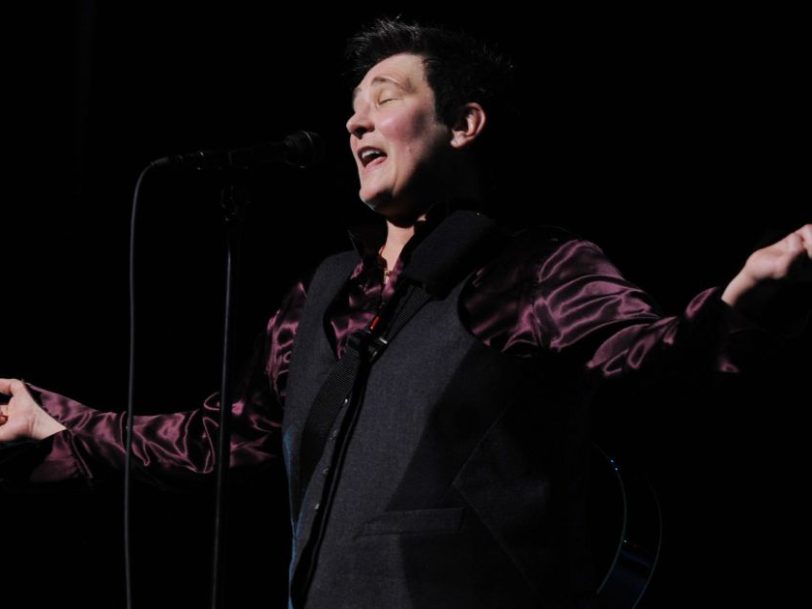One of the most electrifying images of the 90s was the 1993 Vanity Fair cover of k.d. lang, sitting in a barber’s chair, being lathered up for a shave by supermodel Cindy Crawford. Queer, playful, proud, multi-layered: the best k.d. lang songs are as incredible as that photograph. “Androgyny is making your sexuality available to everyone,” lang said in the accompanying Vanity Fair interview, “using the power of both male and female.”
In 1993, lang was already nearly ten years in to a career that had travelled from country music mainstream pop success. “Elvis is alive,” Madonna once said of lang, “and she’s beautiful!” Just like Presley, k.d. lang knows the power of roughing up country music, of winning hearts with her pure tenderness, and of seductive suggestiveness that makes pulses flutter.
Doing all that and more, here are the best k.d. lang songs.
Listen to the best of k.d. lang here, and check out the best k.d. lang songs, below.
10: Summerfling (from ‘Invincible Summer’, 2000)
Verdant and optimistic, Summerfling is a song of healing and rebirth. It’s warm in every sense of the word. It’s also from lang’s poppiest album, Invincible Summer, a journey she had previously resisted taking. “I just got to this point where I went, You know what? I love pop music,” lang said in 2000. “Who are you kidding? You know you like it as a listener, so why can’t you do it as a singer? And then I just fell in love with people again. I fell in love with life and I accepted the fact that I liked pop music.”
Melancholy rather than bliss is lang’s usual métier, so hearing her contentment on Summerfling is a rare treat among the best k.d. lang songs. “Happiness is a tough thing to contain in a piece of art,” she has said. “There’s much more fodder for art in the dark side, I think, just because happiness is a tough thing to make new. Happiness has gotten a really bad reputation and I think it’s overlooked as corny or shallow or trite, but I don’t know why it’s gotten such a bad rap. I think it’s just as legitimate if it has integrity.”


